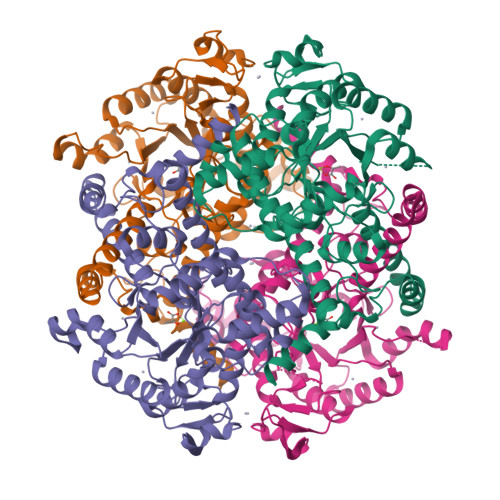The structure and domain organization of Escherichia coli isocitrate lyase.
Britton, K.L., Abeysinghe, I.S., Baker, P.J., Barynin, V., Diehl, P., Langridge, S.J., McFadden, B.A., Sedelnikova, S.E., Stillman, T.J., Weeradechapon, K., Rice, D.W.(2001) Acta Crystallogr D Biol Crystallogr 57: 1209-1218
- PubMed: 11526312
- DOI: https://doi.org/10.1107/s0907444901008642
- Primary Citation of Related Structures:
1IGW - PubMed Abstract:
Enzymes of the glyoxylate-bypass pathway are potential targets for the control of many human diseases caused by such pathogens as Mycobacteria and Leishmania. Isocitrate lyase catalyses the first committed step in this pathway and the structure of this tetrameric enzyme from Escherichia coli has been determined at 2.1 A resolution. E. coli isocitrate lyase, like the enzyme from other prokaryotes, is located in the cytoplasm, whereas in plants, protozoa, algae and fungi this enzyme is found localized in glyoxysomes. Comparison of the structure of the prokaryotic isocitrate lyase with that from the eukaryote Aspergillus nidulans reveals a different domain structure following the deletion of approximately 100 residues from the larger eukaryotic enzyme. Despite this, the active sites of the prokaryotic and eukaryotic enzymes are very closely related, including the apparent disorder of two equivalent segments of the protein that are known to be involved in a conformational change as part of the enzyme's catalytic cycle.
Organizational Affiliation:
Krebs Institute for Biomolecular Research, Department of Molecular Biology and Biotechnology, The University of Sheffield, Sheffield S10 2TN, England.





















